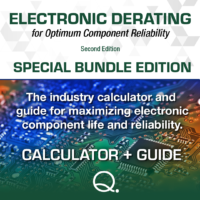| 1 ELECTROMAGNETIC WAVES |
1 |
| 1.1 Introduction |
1 |
| 1.2 Energy In A Magnetic Field |
2 |
| 1.3 Gauge Transformation |
5 |
| 1.4 Poynting’s Theorem, Conservation Of Energy |
8 |
| 1.5 Electromagnetic Waves |
9 |
| 1.6 Linear And Circular Polarization |
11 |
| 1.7 Reflection And Refraction Of EM Plane Waves At Interfaces |
13 |
| 1.8 Frequency Dispersion Characteristics Of Dielectrics, Conductors And Plasmas |
16 |
| 1.9 Waveguides And Resonant Cavities |
17 |
| 1.10 Cylindrical Cavities And Waveguides |
20 |
| 1.11 Waveguides |
22 |
| 1.12 Resonant Cavities |
23 |
| 1.13 Review Of Concepts |
25 |
| 1.14 Maxwell’s Equations In A Medium |
26 |
| 1.15 Non-Linear, Dispersive, And Inhomogeneous Media |
27 |
| 1.16 Wave Optics And Electromagnetic Waves |
28 |
| 1.17 Wave Equation, Helmholtz Equation |
29 |
| 1.18 Interference Of Two Waves |
29 |
| Problems |
31 |
| 2 OPTICAL RAY PROPAGATION |
33 |
| 2.1 Review Of Mirrors And Lenses |
33 |
| 2.2 Lenses |
34 |
| 2.3 Lens Waveguide |
36 |
| 2.4 Biperiodic Lens Sequence Equal Lens Waveguide |
37 |
| 2.5 Identical Lens Waveguide |
40 |
| 2.6 Rays In Lens Like Media |
40 |
| 2.7 Rays In A Planar Dielectric Core Cladding Interface |
41 |
| 2.8 Transverse Modes |
44 |
| 2.9 Wavelength Dispersion |
48 |
| Problems |
51 |
| 3 GAUSSIAN BEAMS |
55 |
| 3.1 Wave Equation In A Quadratic Index Media |
55 |
| 3.2 Gaussian Beams In A Homogeneous Medium K2 = 0 |
57 |
| 3.3 Gaussian Beams In A Lens Like Medium K2 ≠ 0 |
60 |
| 3.4 Gaussian Beams Focusing |
62 |
| 3.5 A Gaussian Beams In A Lens Waveguide |
63 |
| 3.6 Higher-Order Gaussian Beams Modes |
65 |
| 3.7 Pulse Spreading |
66 |
| Problems |
69 |
| 4 OPTICAL FIBERS AND OPTICAL RESONATORS |
73 |
| 4.1 Optical Beams In Fibers |
73 |
| 4.2 Transverse Modes |
77 |
| 4.3 Circular (Cylindrical) Fibers |
80 |
| 4.4 Optical Waveguide Theory |
82 |
| 4.5 Cutoff Condition |
85 |
| 4.6 Modal Dispersion |
86 |
| 4.7 Light Insertion |
89 |
| 4.8 Mathematical Treatment Of Optical Beams In Fibers |
91 |
| 4.9 Wave Equation |
91 |
| 4.10 Mode Characteristics |
94 |
| 4.11 Linearly Polarized Modes |
95 |
| 4.12 Graded Index Fibers |
96 |
| 4.13 Power Flow And Power Density In A Silica Fiber |
100 |
| 4.14 Light Insertion Calculations Into Fibers |
102 |
| 4.15 Losses – Scattering |
105 |
| 4.16 Mechanical Losses |
106 |
| 4.17 Optical Resonators |
107 |
| 4.18 Fabry-Perot Etalon (Interferometer) |
107 |
| 4.19 Fabry-Perot Etalons – Optical Spectrum Analyzers |
110 |
| 4.20 Fabry-Perot Laser |
111 |
| 4.21 Resonance Frequencies |
112 |
| 4.22 Longitudinal Modes |
113 |
| 4.23 Losses In Optical Resonators |
114 |
| 4.24 Unstable Optical Resonators |
116 |
| 5 OPTICAL PROCESSES IN MATERIALS |
127 |
| 5.1 Introduction |
127 |
| 5.2 Transitions Due To Electron-Photon Interactions |
128 |
| 5.3 Optical Cavities And Resonance Analogy |
129 |
| 5.4 Energy Considerations |
132 |
| 5.5 Steady State |
133 |
| 5.6 Optical Resonance And Average Energy |
134 |
| Problems |
137 |
| 6 LASERS AND LASER SYSTEMS |
143 |
| 6.1 Lasers |
143 |
| 6.2 Three Level System Transition Rates |
155 |
| 6.3 Laser Fundamentals Review |
157 |
| 6.4 Laser Oscillations |
163 |
| 6.5 Multi-Mode Laser Oscillations |
171 |
| 6.6 Specific Laser Systems |
175 |
| Problems |
179 |
| 7 NON-LINEAR OPTICS AND NON-LINEAR OPTICAL MATERIALS |
183 |
| 7.1 Introduction |
183 |
| 7.2 Non-Linear Organic Materials |
187 |
| 7.3 Non-Linear Polymers |
187 |
| 7.4 Modulators |
191 |
| 7.5 Fabry-Perot Modulators |
192 |
| 7.6 Non-Linear Polymers |
193 |
| 7.7 Parametric Amplification |
194 |
| 7.8 Parametric Oscillations |
195 |
| 7.9 Frequency Up Conversion |
196 |
| Problems |
199 |
| 8 PHYSICAL PROCESSES FOR OPTICAL DETECTION |
203 |
| 8.1 Detection Of Optical Signals |
203 |
| 8.2 Photomultiplier Detector |
204 |
| 8.3 Noise Mechanisms In Photomultipliers |
204 |
| 8.4 Minimum Detectable Power In Photomultipliers |
204 |
| 8.5 Heterodyne Detection With Photomultipliers |
205 |
| 8.6 Photoconductive Detectors |
206 |
| 8.7 Time Response |
206 |
| 8.8 Generation Recombination Noise In Photoconductive Detectors |
207 |
| 8.9 Heterodyne Detection |
208 |
| 8.11 PN Junctions As Photodetectors |
212 |
| 8.12 Photodiodes As Light Detectors |
213 |
| 8.13 PIN Structures As Photodetectors |
215 |
| 8.14 Avalanche Photodiodes |
218 |
| 8.15 Real Detector Characteristics |
220 |
| Problems |
225 |
| 9 CHARACTERISTICS OF PHOTODETECTORS |
231 |
| 9.1 Introduction |
231 |
| 9.2 Response Time And Frequency Response |
232 |
| 9.3 Spectral Response |
232 |
| 9.4 Detector Noise Sources |
233 |
| 9.5 Graded Bandgap Detectors |
236 |
| 9.6 Optical Fiber Link |
237 |
| Problems |
241 |
| 10 MODULATION OF LASER BEAMS |
243 |
| 10.1 Introduction |
243 |
| 10.2 Electro-Optic Amplitude Modulation |
244 |
| 10.3 Phase Modulation Of Light |
245 |
| 10.4 High Frequency Effects |
246 |
| 10.7 Transverse Mode Of Modulation |
249 |
| 10.8 Modulation Of Light By Means Of The Quadratic Electro-Optic Effect |
250 |
| 10.9 Internal Modulation |
252 |
| Problems |
255 |
| 11 SEMICONDUCTOR LASERS AND LIGHT EMITTING DIODES |
259 |
| 11.1 Introduction |
259 |
| 11.2 Light Emitting Diodes (LED) |
259 |
| 11.3 Infrared Leds |
262 |
| 11.4 Physics Of Leds |
265 |
| 11.5 Homojunctions And Heterojunctions |
266 |
| 11.6 Calculation Of Threshold Current Density |
268 |
| 11.7 Quantum Well Lasers (QW, MQW) |
271 |
| 11.8 Laser Physics |
274 |
| 11.9 Threshold Current Density In Double Heterostructure Lasers |
278 |
| 11.10 Power Output |
282 |
| 11.12 Start Oscillation Condition For Semiconductor Lasers |
285 |
| Problems |
291 |
| 12 DOUBLE HETEROJUNCTION AND VERTICAL CHANNEL SURFACE LASER |
295 |
| 12.1 Double Heterojunction Laser (DH) |
295 |
| 12.2 Confinement Factor Γ |
297 |
| 12.3 Far Field Pattern |
298 |
| 12.4 Distributed Feedback Laser Theory Of Coupled Modes |
301 |
| 12.6 Oscillation Condition |
306 |
| 12.7 Directional Coupling |
307 |
| 12.8 Interaction Of Light And Sound |
309 |
| Problems |
317 |
| 13 VERTICAL CHANNEL EMITTING LASER |
321 |
| 13.1 Introduction |
321 |
| 13.2 VCSEL Device Configuration |
322 |
| 13.3 VCSEL Gain And Threshold Current |
329 |
| 13.4 VCSEL Performance And Explanations |
331 |
| 14 FAILURE MECHANISMS OF OPTOELECTRONIC INTERCONNECTS |
339 |
| 14.1 Introduction |
339 |
| 14.2 Analysis Of Bond Related Failures In Optoelectronics |
342 |
| 14.3 Failure Mechanism Related To Contamination In Optical Devices |
343 |
| 14.4 The Failure Modes |
350 |
| 14.5 Electromigration In Opto-Circuit Metallizations |
352 |
| INDEX |
369 |








